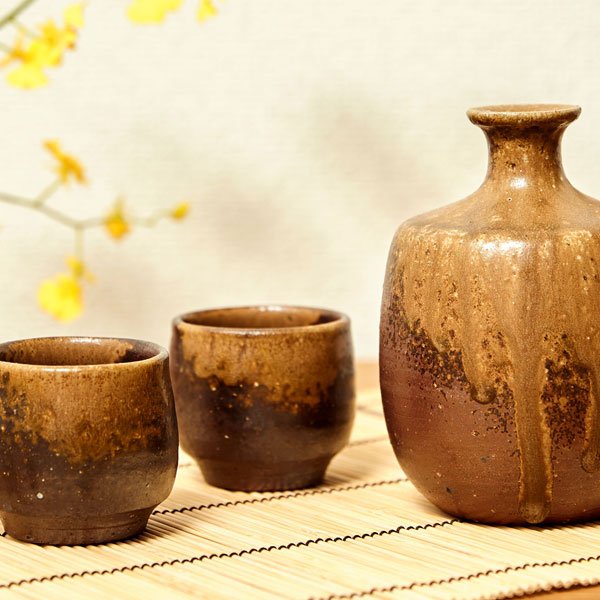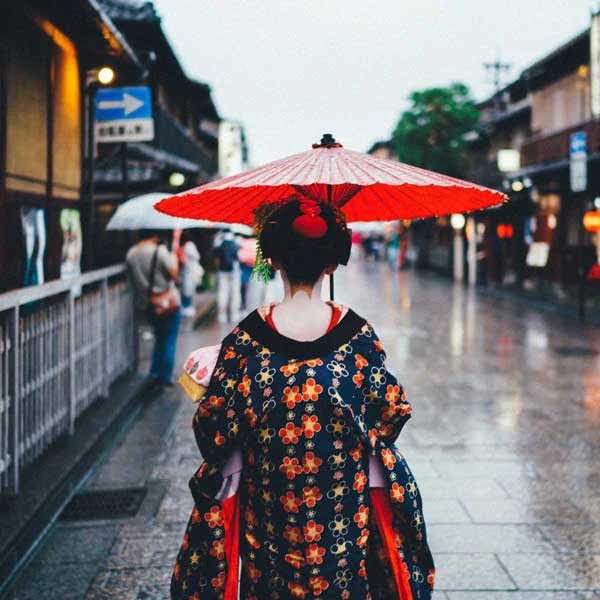© Yufuku, Mindscape by Ken Mihara
Ceramics are unquestionably one of the highlights of Japanese art. From a single tea bowl to a conceptual art piece, Japanese artists showcase their ceramic expertise in ways that are vastly different from their western counterparts.
Take this ceramic sculpture by master craftsman Ken Mihara, which is rooted in the ancient principle of wabi-sabi – a uniquely Japanese philosophy of self-restraint and imperfection. You can see more of his work at Yufuki.net.
While western ceramic arts often focus on the elaboration of form and style, the deliberate rustic simplicity of Japanese ceramics opens a new window on the appreciation of beauty.
Read on to uncover how these masterworks are transforming ceramics in the most extraordinary ways!
Sakiyama Takayuki
© Pierre Marie Giraud, vase by Sakiyama Takayuki
It’s hard to imagine this unique ceramic piece being made by a person – it looks like it was carved from sandstone by the elements!
Perhaps that is no accident, as artist Sakiyama Takayuki draws his inspiration from the sea, in particular the rugged coastline near his studio on the Izu Peninsula.
To see more fascinating work by Sakiyama and others, check out the gallery of Pierre Marie Giraud.
Keiko Masumoto
© Keiko Masumoto
The detail on the multi-tiered Edo-era castle that emerges from this Japanese ceramic pot is fascinating, but what would you use such a vessel for?
Ceramic artist Keiko Masumoto is intrigued by the distinction between craft that can be used, and art that cannot. She choses to occupy the ambiguous border between the two. By presenting her work as a usable object, she can insert her artistic vision into people’s real life in a way that a painting on wall never could.
© Keiko Masumoto
This same distinction between art and craft has also historically created a barrier to keep women out of the sphere of fine arts. By blurring this definition, Masumoto is also breaking down the obstacles that are often placed before women artists.
Masumoto’s work has been exhibited all over the world, including the V&A in London. Visit her website to find out more!
Matsui Kosei
© Joan B Mirviss Gallery, Vase by Matsui Kosei
You can almost feel the rough-hewn surface of this unique ceramic vase. Its creator, Matsui Kosei, developed the method of fusing together different colored clays by studying pieces from Tang dynasty China, successfully reviving a technique known in Japanese as neriage.
© Joan B Mirviss Gallery, Vase by Matsui Kosei
Here the lighter top layer has been marbleized to produce a veined stone texture. For his mastery of neriage pottery, Matsui was designated as a Living National Treasure in 1993. Check out his other captivating Japanese ceramics at Joan B Mirviss Gallery!
Takuro Kuwata
© Pierre Marie Giraud, Tea Bowl by Takuro Kuwata
Japan’s rich history and cultural sensibility have a strong influence on these stunning artworks along with an ample dose of contemporary originality.
How is innovation possible in centuries-old Japanese craftsmanship? This otherworldly ceramic tea bowl by Takuro Kuwata is a fascinating answer. The artist’s cutting-edge experiments in clay reveal the limitless potential of the material.
© Pierre Marie Giraud, Vase by Takuro Kuwata
The object’s form is a radical departure from the conventional, which could not be achieved without a profound understanding of the history of the craft itself.
Check out the Gallery Pierre Marie Giraud for more incredible ceramic art.














LIFESTYLE | July 28, 2023